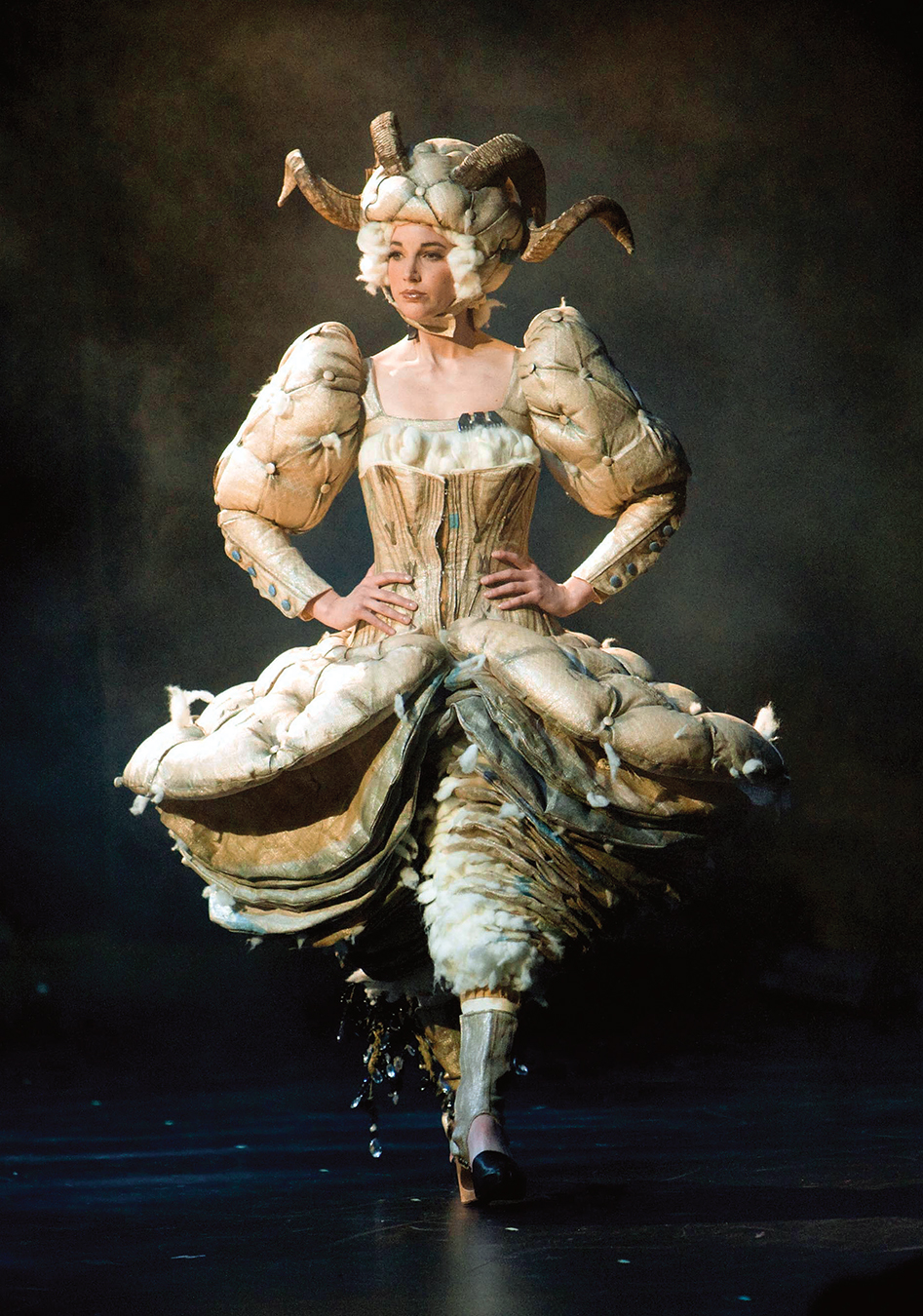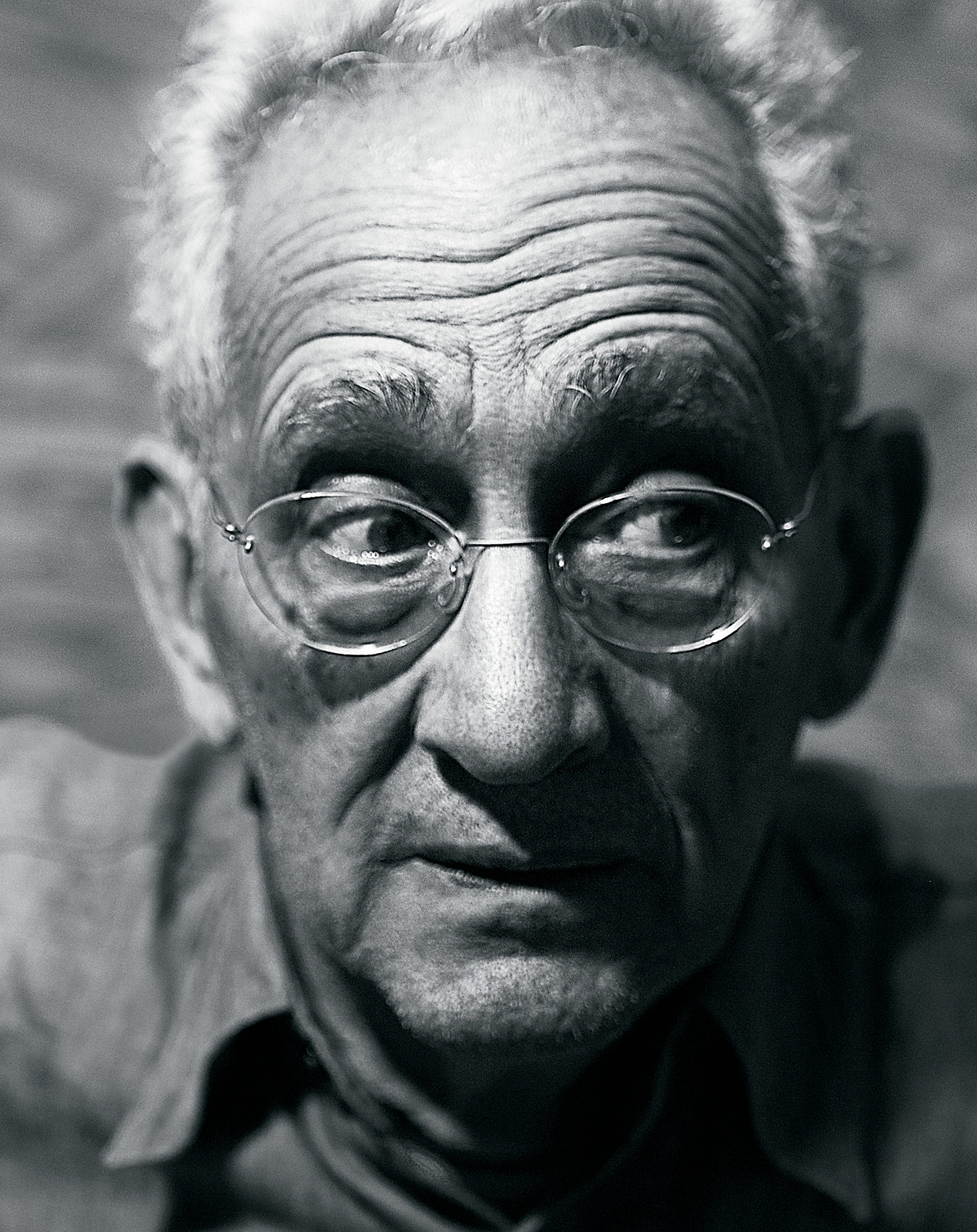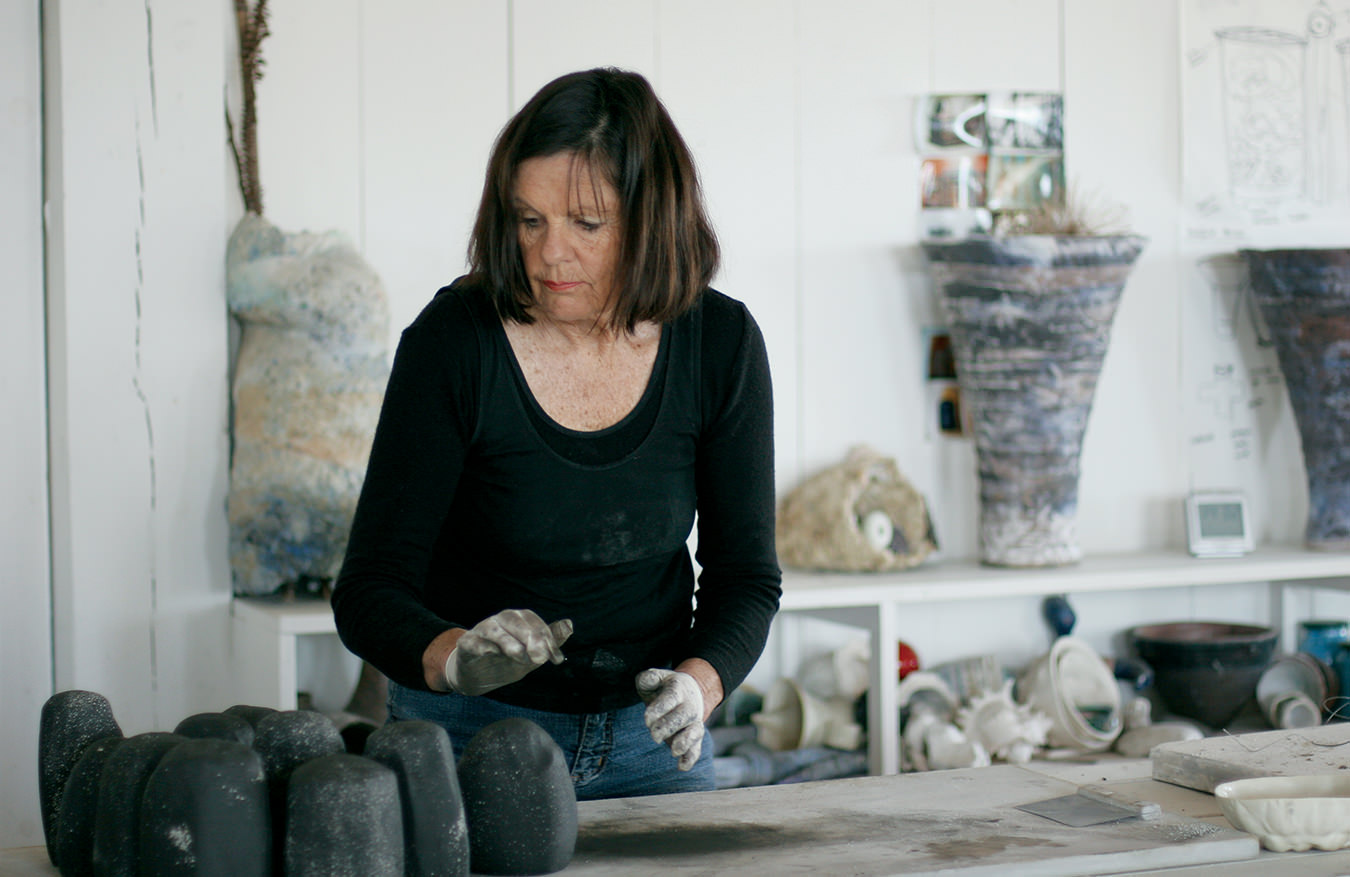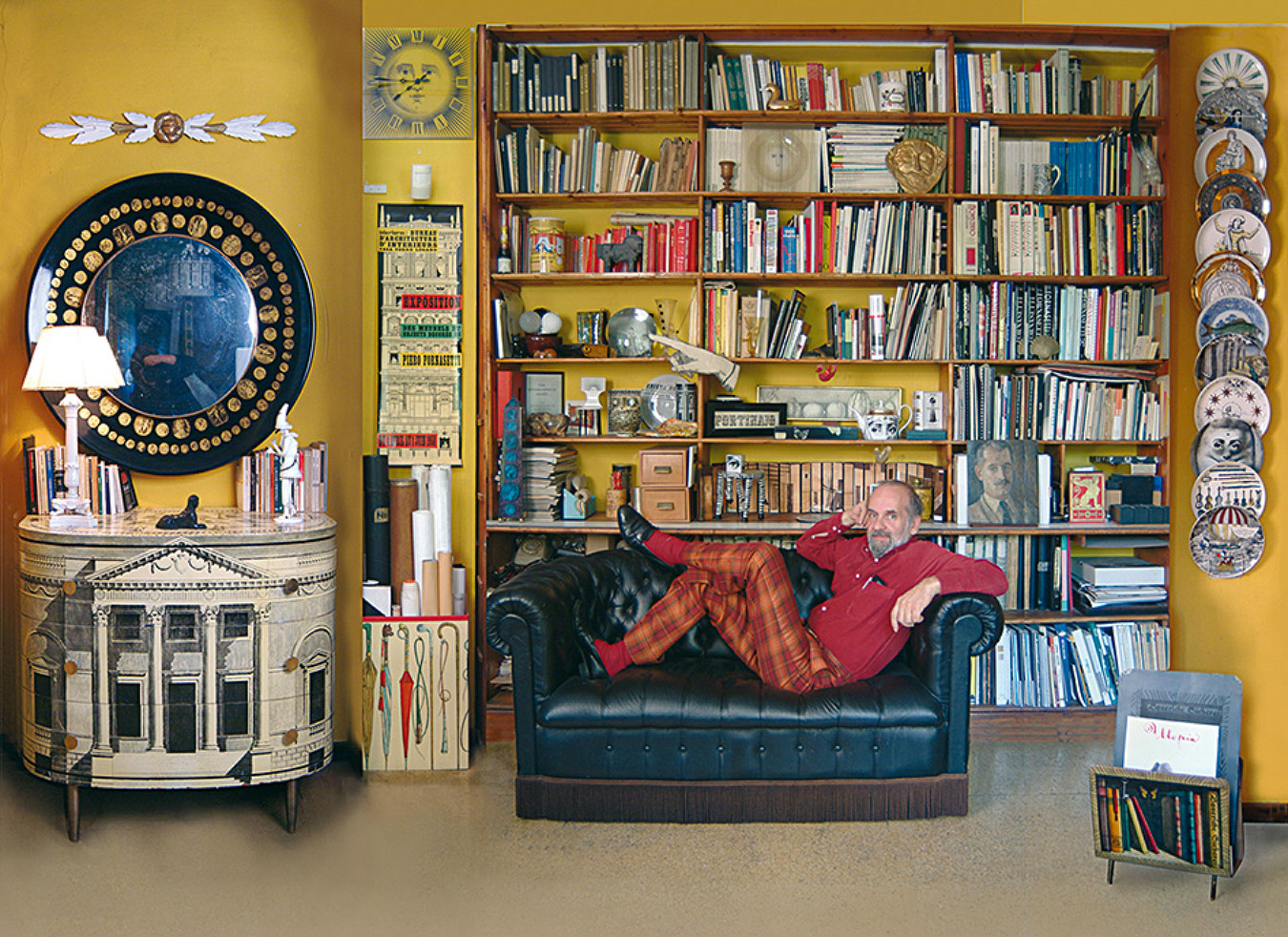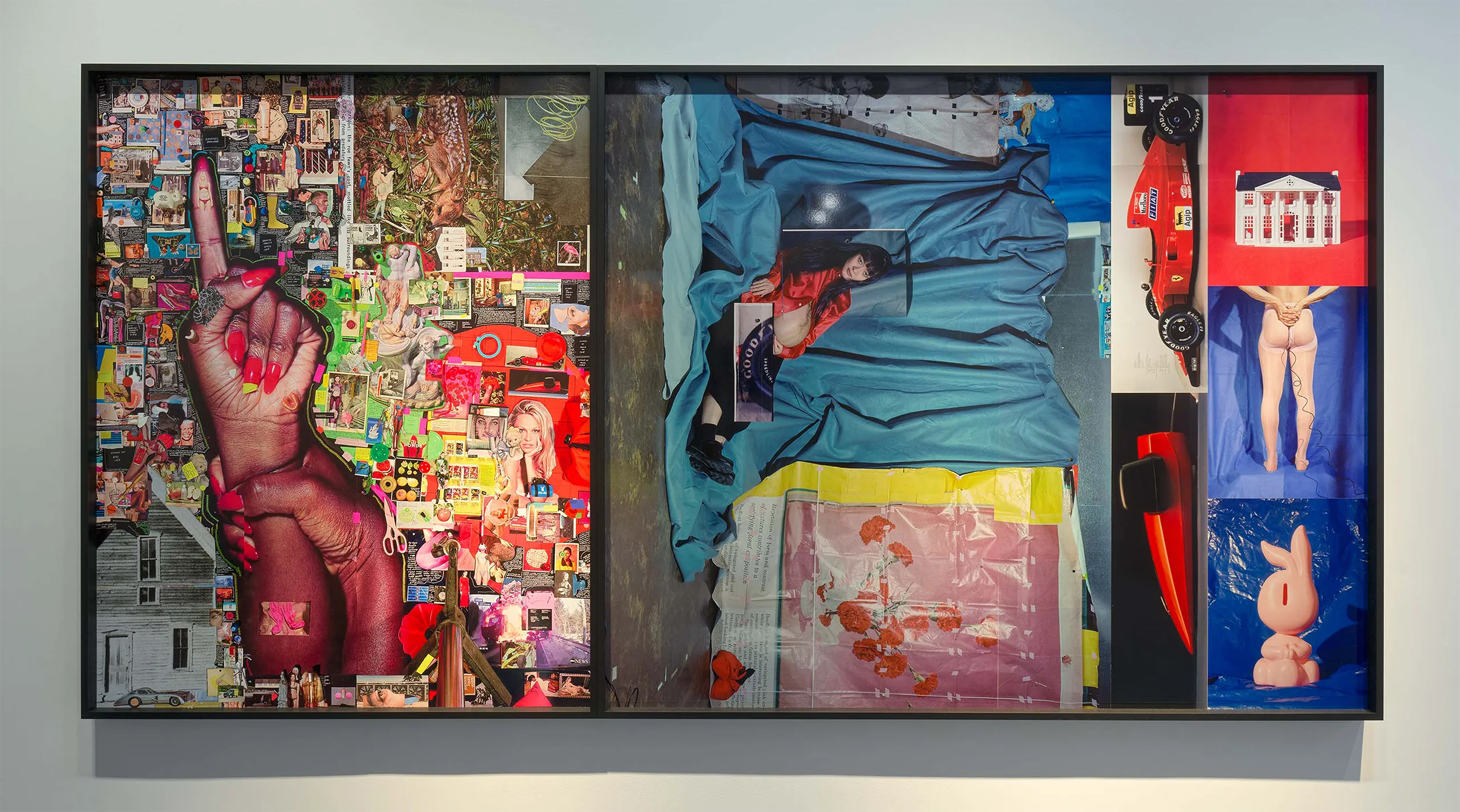
Sara Cwynar on Making Art
Demystifying the authority of images and making human intervention visible are hallmarks of the Canadian artist's work.
“I’m just like a fish in a tank,” says Sara Cwynar. “Whatever size I have, I just expand to fill that size.” The Vancouver-born, New York-based artist and 2025 Guggenheim Fellow, known for her sprawling, multilayered photographs and films that evoke the feeling of having too many tabs open at once, is talking about how she just moved into a new studio in Brooklyn’s Dumbo neighbourhood. It’s been difficult downsizing from the 1,200-square-foot (formerly subsidized) space to the new 700-square-foot one. “I just can’t get rid of anything,” she says. “I have millions of objects.”
The figure Cwynar quotes is hyperbolic—maybe. It would be next to impossible to accurately quantify the contents of the many plastic bins she has stored in her studio. A magpie for discarded miscellany, she has spent more than a decade collecting straws, candy wrappers, plastic crockery, marble fruit, ear plugs, packing peanuts, knitting needles, cologne bottles, found photographs, soft-flocked jewellery boxes, blobs of melted candle wax, vintage postcards, makeup sponges, and myriad other trinkets that most would pass over as junk.
“Every few years, I’ll do a massive organization,” she says of her trove, “but then as soon as I make something, everything just gets all mixed up again.” She’ll often rediscover unexpectedly ideal items for a project while hunting for something else—a thrill every thrifter is familiar with. “It mostly works,” she says of her system, “but sometimes I’ll waste a whole day looking for a certain plastic cup.”

The organizing principle governing Cwynar’s most recent solo exhibition at the Institute of Contemporary Arts in Boston, however, is tried and true. Alphabet is a two-part project consisting of an enormous photo-based mural (which she describes as “an advertising billboard, but nothing’s for sale”) and an installation of 26 black panels—one for each letter from A to Z. Each panel displays a single word alongside associated objects and images. D, for example, is for Disinformation. It includes images of war that have come to define significant military events in the popular imagination despite rumours that they were staged: Joe Rosenthal’s Raising the Flag on Iwo Jima, 1945, and Alex Gardner’s Home of a Rebel Sharpshooter, Gettysburg from Gardner’s Photographic Sketchbook of the Civil War, 1865. It also presents AI-generated deepfakes of politicians and celebrities, such as a mug shot of U.S. President Donald Trump.
The panels are Cwynar’s tribute to art historian Aby Warburg’s Mnemosyne Atlas, made between 1925 and 1929. Warburg attempted to map collective memory by creating cryptic groupings using printed and pictorial sources from antiquity to modernity. He died before completing his magnum opus but perhaps would have just kept adding to it forever. “For me, the appeal of that system is that it’s trying to be objective, but it really just becomes about his own idiosyncratic ideas about what’s important or beautiful or notable,” Cwynar says of Warburg’s work. “I think about how the internet would have changed the idea of doing something like that, and how those panels kind of look like Google image searches.”
To make Alphabet, Cwynar compiled terms suggested by her own internet algorithm, ending up with a list of words that felt both newsworthy and personally relevant. “I wanted to think about how there are all these human decisions behind anything that seems generated objectively, and to keep that in the work too, and update that mode of working.”
Demystifying the authority of images and making human intervention visible are hallmarks of Cwynar’s work. Before completing her MFA at Yale University and becoming a full-time artist, she worked as a graphic designer at The New York Times Magazine, and her process is informed by the deliberate deception and trickery used in advertising and media to sell both commodities and ideas.
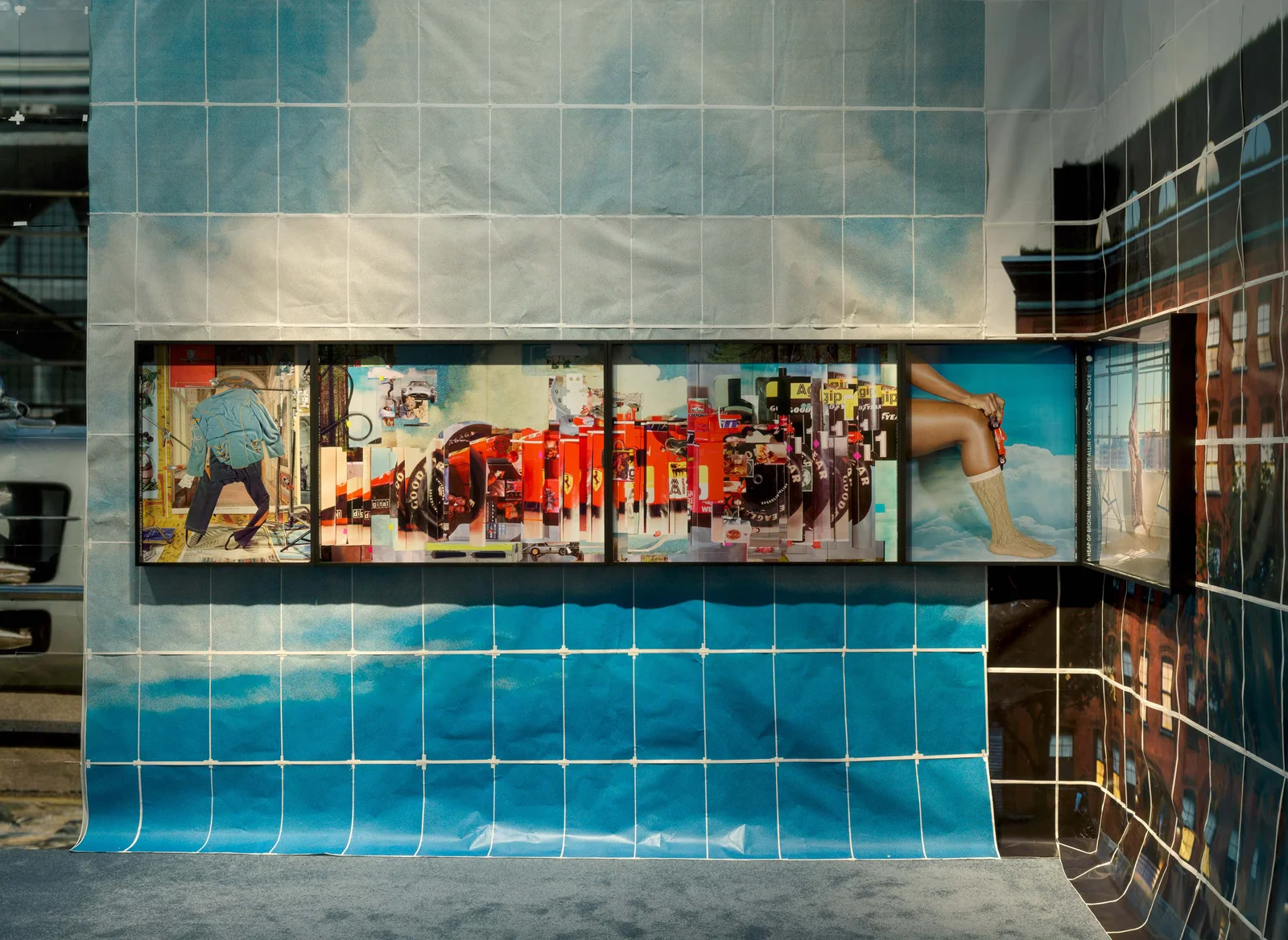
Installation view: Sara Cwynar, Baby Blue Benzo, 52 Walker, New York, October 4–December 21, 2024. Image use courtesy of 52 Walker, New York.
Even though she is well aware of all the levers being pulled behind the curtain of capitalism, that doesn’t mean that she is immune to its charms. “I love shopping so much, and I feel like that is important to my work in a way,” Cwynar says. She is a descendant of the Pictures Generation (made up of artists such as Cindy Sherman, Barbara Kruger, and Laurie Simmons) but differentiated from that group of older artists in that her relationship with capitalist society entails “fully participating in it while trying to critique it.” On Instagram, her profile picture is of a snake poised to strike—perhaps at a salesperson trying to procure its oil, or perhaps in pursuit of its own tail.
Cwynar’s works engage directly with consumerism, as in the trilogy Soft Film (2016), which wonders about how value is ascribed to discarded objects depending on their changing contexts, Rose Gold (2017), which is about coveting a new shade of iPhone, and Red Film (2018), which shows how art, language, and theory are commodified as much as clothes and makeup. The title of her recent project Baby Blue Benzo (2024) is a pun on expensive cars and drugs for treating insomnia, a condition suffered by many whose brains can’t shut off because of the blaring racket of information overload. Cwynar has trouble sleeping herself.
Adjacent to and even intertwined with her art practice, Cwynar has also collaborated with haute fashion brands including Hermès and Dior.
___
She often uses models and images from the luxury fashion platform Ssense in her work, seeing them as a canny visual representation of how conceptions of the self are fragmented by, as she puts it, “the multiplication of a person in images; how people are reproduced (and increasingly reproduce themselves) and how this process suggests an overwhelming amount of choice that isn’t actually a choice at all.”
In Alphabet, Y is for Youth, and Cwynar expresses the concept in a series of images pulled from the retailer of bored, thin, young women in barely there and everyday garments, fixed in angular poses like toy dolls.
A work from Cwynar’s Doll Index series (2024) appears on the wall beside the panel for Y. The collaged still life combines a photograph of a mannequin doll wearing a costume from 1865 with contemporary objects such as cosmetics, lingerie, an Acne Studios shopping bag, hair clips, makeup brushes, and more. Alphabet marks the first time that Cwynar has experimented with pairing casual assemblages of objects from her studio with finished photographs. “In this context,” she says, “I think seeing how something gets transformed by photography makes sense.”
A portrait Cwynar took of popular culture’s most famous living “doll,” Pamela Anderson, is presented on the panel for I, which is for Infantilization. Cwynar immediately dropped everything she was working on when she was asked by The Times to photograph Anderson in 2023, quipping that the actor is “the number one subject for my art.” The photograph in Alphabet is an outtake from that assignment. “I covered it in plastic wrap and rephotographed it,” Cwynar explains. “I wanted it to feel like it had been taken out of storage, or like it had been in the back somewhere, and then suddenly she was brought back out as this metaphor for our cultural rediscovery of Pamela Anderson, who we can finally take seriously.”
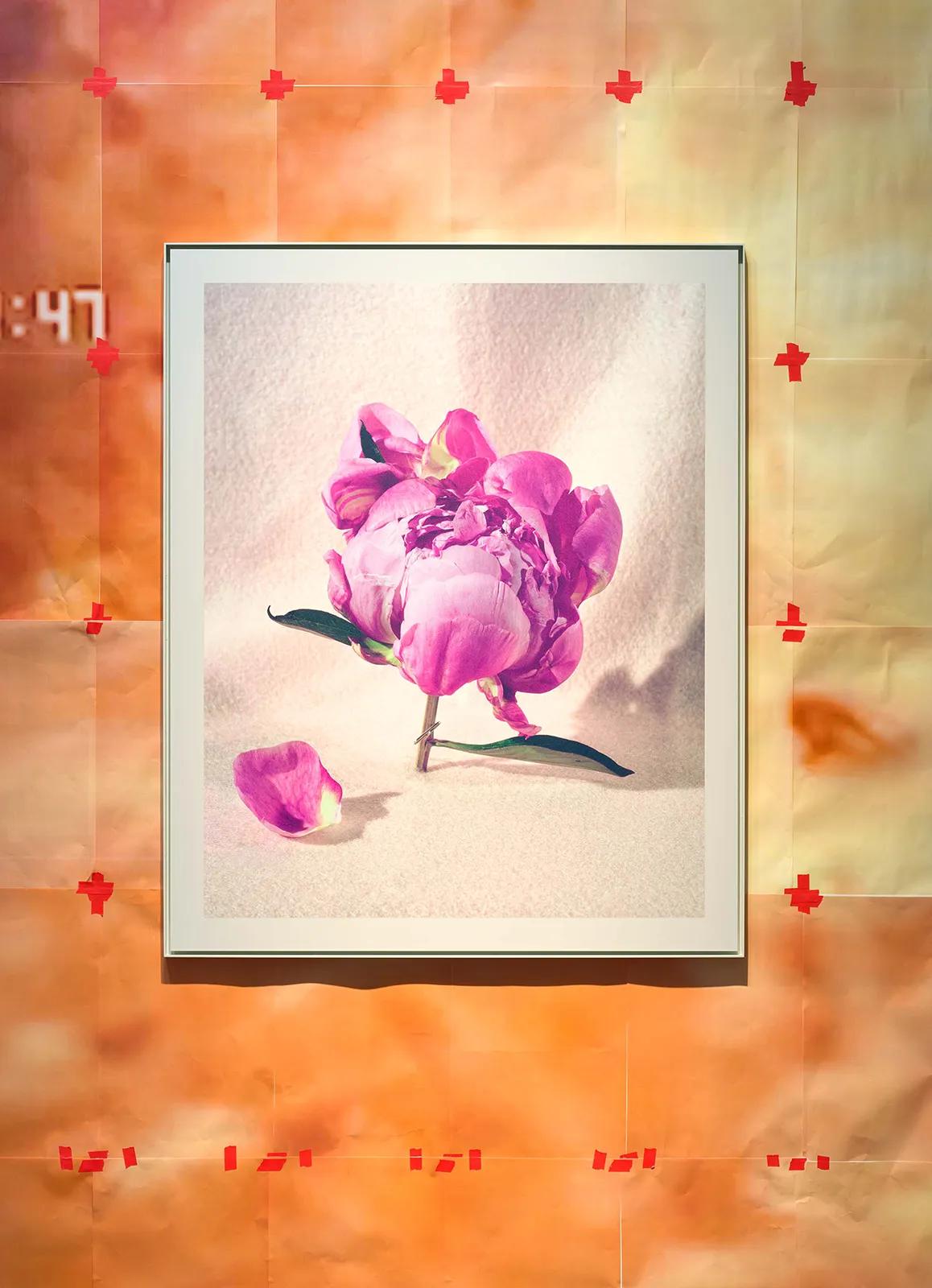
Installation view: Sara Cwynar, Baby Blue Benzo, 52 Walker, New York, October 4–December 21, 2024. Image use courtesy of 52 Walker, New York.
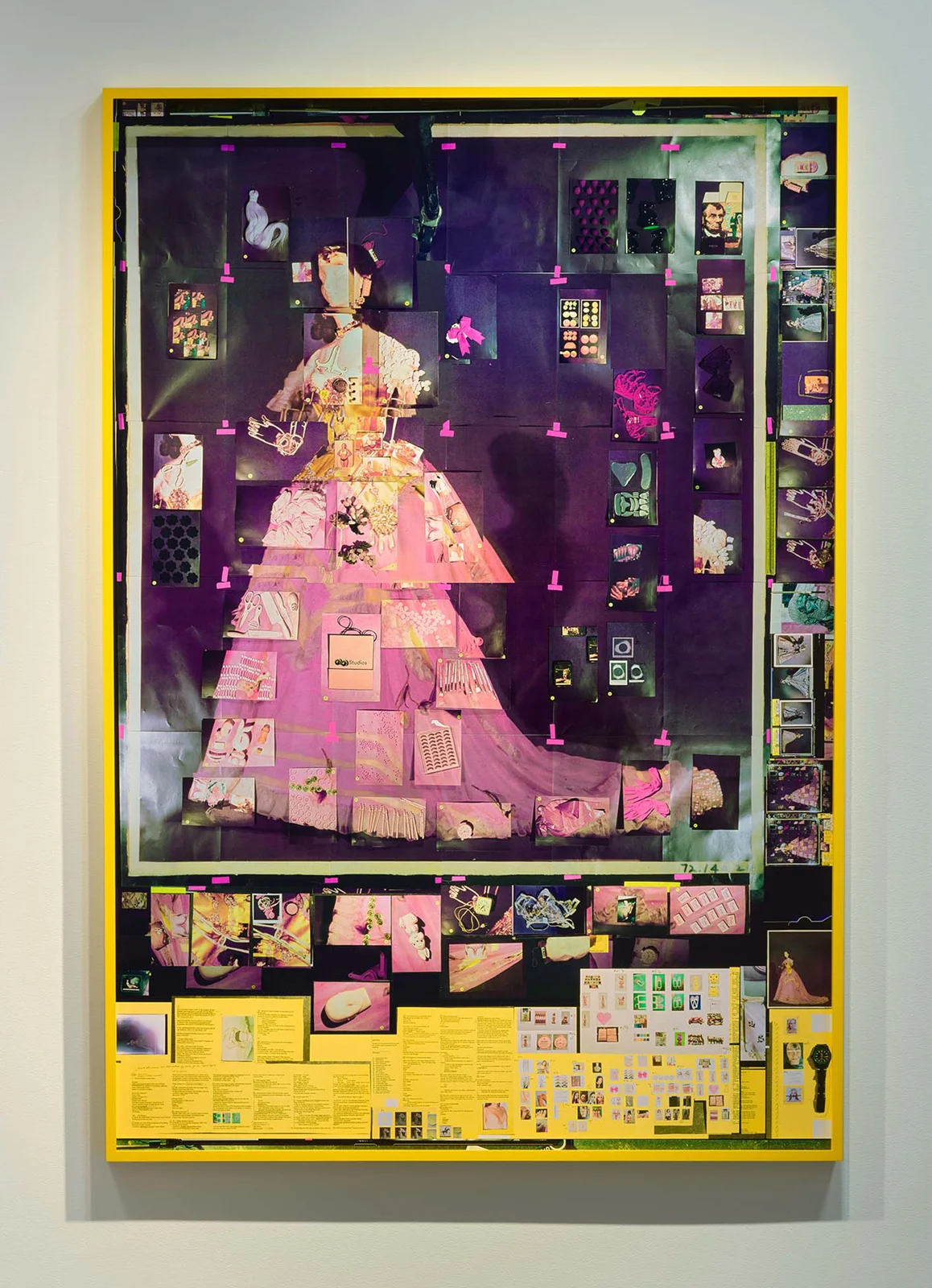
Sara Cwynar, Doll Index, 1865 (2024). Archival pigment print mounted on Dibond.
Like the Baywatch star, Cwynar is also a blonde from British Columbia who struggles with gendered and misogynist dismissals of her work because it is so attractive. “I definitely know that people write off my work because it’s so aesthetically pleasing, but I think that’s part of the content,” Cwynar said in a 2019 interview with Durga Chew-Bose for Ssense. “It’s always been important for me to make things that are accessible, that have values other than didactic art theory values, and can be pleasurable on other terms.”
Cwynar is an avid reader, and in 2021 she told MoMA Magazine, “One of my main goals in life is to make theory accessible.” The essential Sara Cwynar reading list, culled from explicit references in her work, would include Mythologies by Roland Barthes, Cruel Optimism by Lauren Berlant, Hyperobjects by Timothy Morton, and The Age of Surveillance Capitalism by Shosana Zuboff, among many others.
The title of Cwynar’s 19-minute, six-channel film Glass Life (2021) comes from a term Zuboff coined in her 2019 book. It describes the condition of obliterated privacy created when we invite our devices to constantly transmit our data to the powers that surveil us. In a review of the work in E-flux, contributor R.H. Lossin says that the audiovisual density of Glass Life “could fairly be described as a realist depiction of the internet.” He asks, “What is the internet but a massive archive? And what is an archive but an institution, as Jacques Derrida noted in the mid-1990s, obsessed with cheating death?”
In a class on the archive that Cwynar taught this spring at Cooper Union in New York, she talked about “the death drive being present in the act of collecting, and also photography being this hedge against death.” While she acknowledges that anxiety around death is present in her work, she says her legacy is not something she is too concerned with. “I feel like it’s hard enough to live as an artist and just keep making your work,” she says, “so I try not to think about whatever will outlast me, whether that’s the objects or the artworks.” She’s comfortable enough with the idea of someone having to throw away her amassed archive one day, and calls it “humiliating for humankind” that Styrofoam cups will likely last longer than our species on this planet.
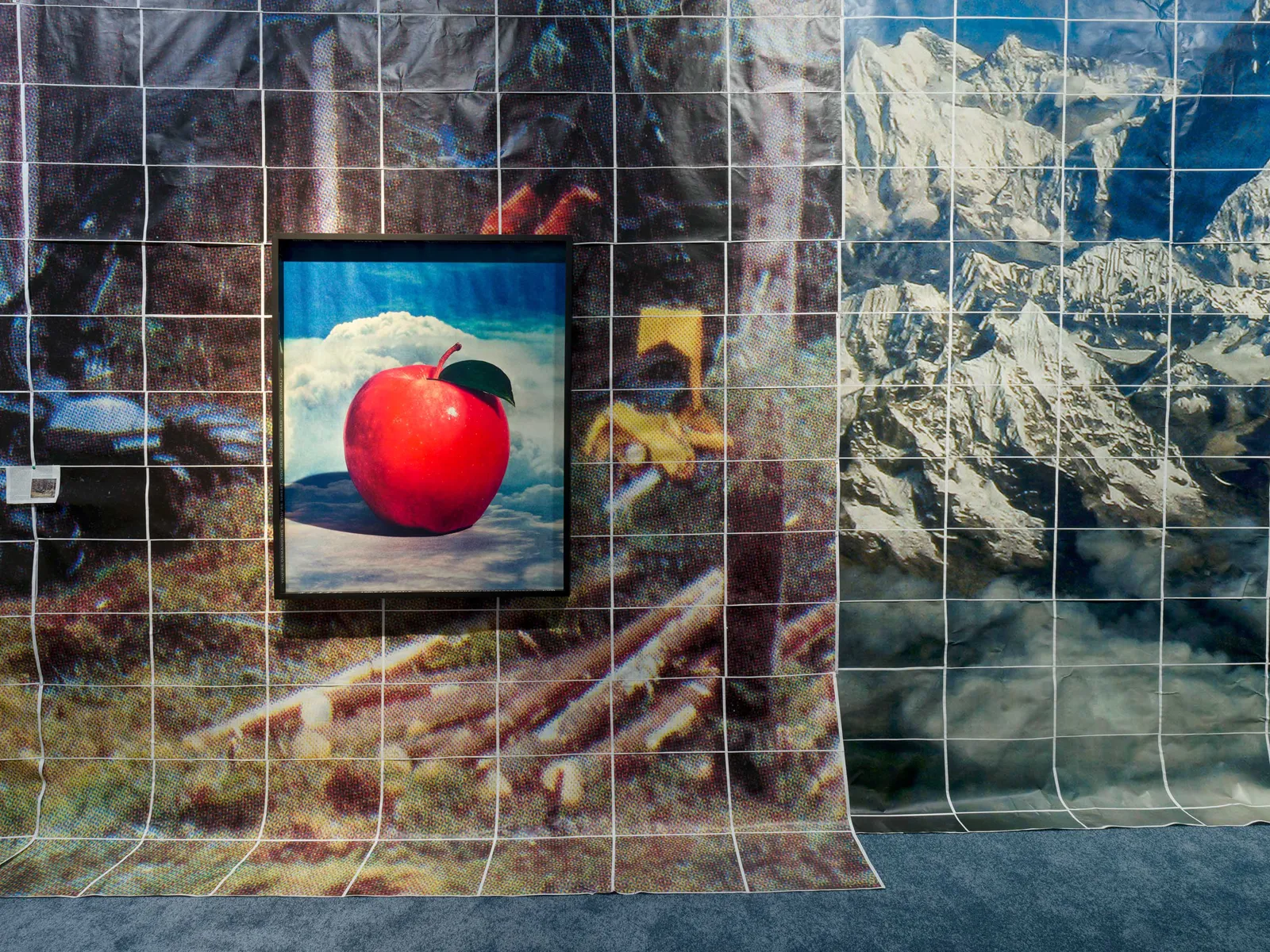
Installation view: Sara Cwynar, Baby Blue Benzo, 52 Walker, New York, October 4–December 21, 2024. Image use courtesy of 52 Walker, New York.
“We’re in a moment in culture where everything is so disposable,” Cwynar says. The environmental news website Earth.org estimates that 92 million tons of fast fashion waste is sent to landfills each year. “I feel this incredible guilt about buying new things and then getting rid of them quickly,” she adds. “I do spend a lot of time on eBay, which I think is an amazing almost like recycling centre.”
Recently, Cwynar has been trawling online archives and marketplaces for pop imagery relating to figure skating in the 1980s—a sport close to her heart and one that she demonstrated her prowess in by performing a dizzying spin on the ice in Baby Blue Benzo. “I was a teenage figure skater,” she reveals, “and I had a ton of superstitions—like, I have to put my left tight on before the right one.” As an artist, she says, those obsessive-compulsive tendencies manifest as “definitely the same thing in a different form. Now it’s like, if I let it go,” she says of a hypothetical item she could consider adding to her collection, “it might have been the source of the greatest artwork I would have ever made.”
There is renewed urgency in the study of archives when there is a genuine threat of them being burned to the ground. In March, the Associated Press reported that the U.S. Defense Department was deleting images of the B-29 aircraft Enola Gay, which dropped the first atomic bomb on Hiroshima during the Second World War, because of panic surrounding diversity, equity, and inclusion programs in the military. As politicians recklessly tout falsehoods as fact, and clocks are turned backward on civil rights, society needs scholars such as Cwynar to help steer us through the maelstrom—which could get even more turbulent with the increasing adoption of artificial intelligence.

Installation view: Sara Cwynar, Baby Blue Benzo, 52 Walker, New York, October 4–December 21, 2024. Image use courtesy of 52 Walker, New York.
Among the mass of material in Cwynar’s studio, there is one box in particular that contains her favourite collection of images. It’s what she would save in a flood or fire. “They don’t have one subject matter, but they’re usually photographed in some sort of really careful way but with mistakes in them,” the artist says. “It’s essentially a box of images where you can see the human hand in it, or where it was made for a commercial purpose but not quite at the highest echelon. Like, it wasn’t meant to be in a magazine, it was meant to be in a trade manual, so someone did a decent job of photographing it but not the best job. Those are the kind of images that are so hard to find and are so satisfying, and they get outside the common language of photography. That’s the collection that I’ve been building since the beginning of making art that would be really irreplaceable.”
Photographs courtesy of the artist, Cooper Cole, Toronto, and The Approach, London.

